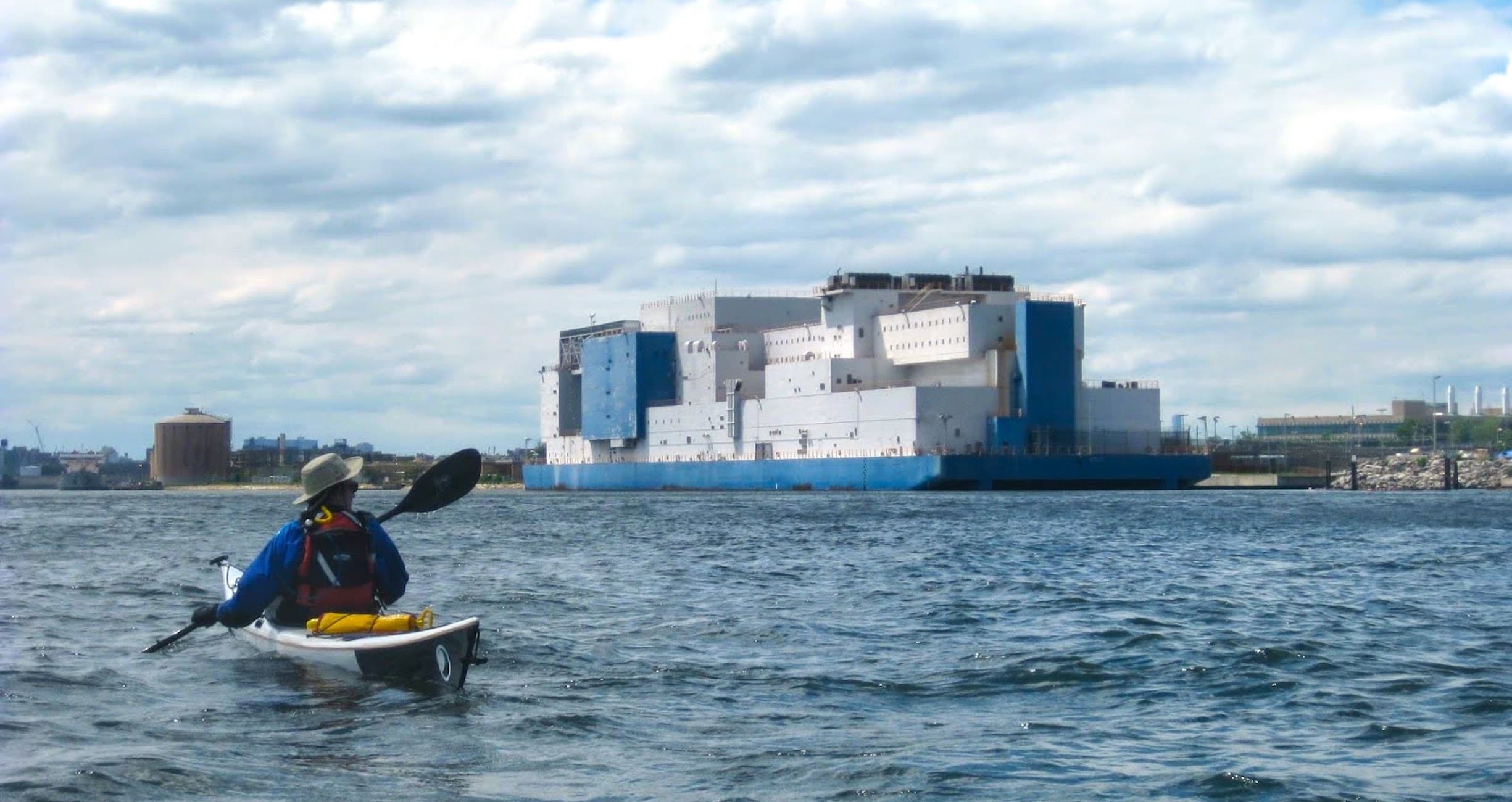Someone Jumped from New York City’s Floating Jail, “The Boat.” It’s Past Time to Close It.

Last week, Gregory Acevedo, a 48-year-old man held in Department of Correction (DOC) custody, leaped
to his death from New York City’s floating jail, the Vernon C. Bain Center (VCBC). He plunged 50 feet into the East River and was found unresponsive. His lawyer said he had been held on the barge since February. Fifteen other people have died due to DOC negligence this year.
Acevedo’s decision to jump from the jail drew renewed calls to close VCBC, colloquially known as “The Boat.” VCBC was constructed in 1992 as a makeshift jail floating just off Hunts Point in the Bronx. It was intended as a stopgap solution to alleviate overcrowding on Rikers Island, as the city’s jail population had soared to 22,000 people at the height of the War on Drugs. By 1995, however, the jail population had decreased to less than 18,000, and city officials decided to shut down operation of The Boat, a move they expected to save $2 million a month. Then, Rudy Giuliani reopened it as mayor in the late 1990s, and it has remained in service since.
Today, New York City’s jail population has dropped to less than 6,000, but the city continues to hold people on the floating jail. A man named Stephan Khadu also died on The Boat last Fall, and defense attorneys say that the conditions throughout DOC facilities are “nightmarish.”
“We're talking about serious cases of severe medical neglect, about fires that are allowed to burn unabated while people are locked inside of their cells. We’re talking about assaults on people by guards, or assaults by other individuals who are incarcerated that are allowed, and even encouraged, by DOC staff. We're talking about people who are being kept there past the days that they're supposed to be released,” said M.K. Kaishian, a civil rights attorney with clients on VCBC. “People will do a lot of things to escape what really amounts to hell for them.”
Freedom Agenda Community Organizer Edwin Santana, who was once detained at VCBC, said that Acevedo’s decision to jump overboard underlines how dire the conditions must be. “The Boat must be just as bad as Rikers Island for someone to do that. That person wanted off that boat,” he said. He added that the poor conditions are driven by an abdication of responsibility by DOC to address the failures that have led to dozens of jail deaths since the start of last year. “Nobody is being held accountable for what's happening [on Rikers Island], so of course it's going to spill over to The Boat.”
Over the last two years, 31 people have died due to neglect in New York City jails—up from 11 between 2018 and 2019. Those deaths are a direct consequence of the “hellish” conditions in DOC facilities, which include people held for days in dangerously crowded intake facilities with no beds, people forced to sleep in shower cells among sewage and fecal matter, the denial of medical care, a failure to provide access to counsel and courts, and pretrial detention stretching months or even years. The deadly dysfunction is due to an overreliance on pretrial detention and rampant staff absenteeism. A report by the federal monitor observing city jails found that 30 percent of the DOC workforce does not show up to work on any given day.
Santana, who was also once detained on Rikers Island, said that the argument that VCBC is somehow safer for people held in DOC custody makes no sense. “When I got to The Boat, I didn't feel safer than if they would have sent me to Rikers. It’s being run by the same people,” he said. “The conditions of the Boat are the same as Rikers Island. There's no ifs, ands, or buts about it.”
New York City needs to close The Boat. It’s a relic of the War on Drugs and does not build public safety—in fact, it represents a major liability. The city has a plan to close VCBC in 2027 but has yet to take any concrete steps to reduce reliance on it, despite a dramatically smaller jail population. Rather than pour millions into operating a floating jail, officials can, and should, instead invest in solutions, like supportive housing and treatment for mental illness and substance use conditions to mitigate our dependence on jail and meet the needs of people in crisis.
“VCBC was intended to be temporary overflow when the Rikers population topped 20,000. It was not designed to give access to recreation, programs, or services,” said Alice Fontier, managing director of Neighborhood Defender Service of Harlem, a public defender office representing people on The Boat. “It is literally a ship, with Black and brown men in chains and cages, with no known end to their torture. The Middle Passage exists in the East River.”
